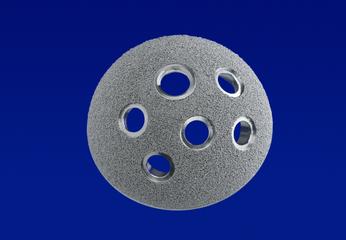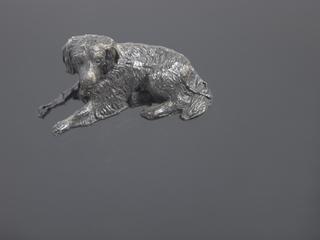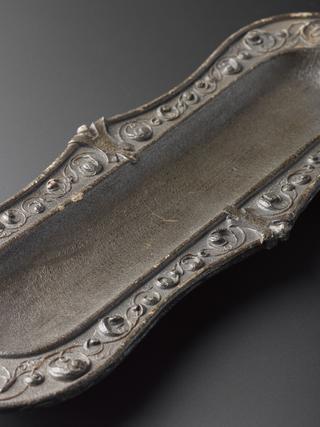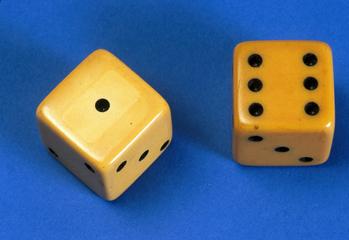
Embossed decorative rubber panel
- Made:
- 1850s in United Kingdom
- maker:
- Unattributed
A cream-coloured octagonal panel in vulcanised rubber embossed with a fruit centrepiece and decorative border. It is of a type produced for display at the Great Exhibition, 1851.
This panel was made to illustrate the versatility and properties of vulcanised rubber. Vulcanised rubber is made by immersing rubber in molten sulphur. The resulting product is a material that is much more durable and can withstand higher and lower temperatures than unprocessed rubber. This process was discovered by Thomas Hancock through a series of experiments conducted after he had filed a provisional patent in 1843. The American rubber industrialist Charles Goodyear discovered this same process a few years prior, but had kept the method secret and not applied for a British patent.
This object is part of a collection relating to the Hancock family, acquired in 2018 from a descendant and family historian of the Hancocks. The collection comprises portraits covering 4 generations of the Hancock family, personal and business archives, and a series of related objects. Thomas Hancock is the centre of the story – inventor of the patent masticator and founder of the British rubber industry. The Hancock company ran until the 1930s, led by Thomas’s nephew and assistant, James Lyne Hancock, and then a great nephew John Hancock Nunn.
Details
- Category:
- Plastics and Modern Materials
- Object Number:
- 2018-574
- Materials:
- Vulcanised rubber
- Measurements:
-
overall: 380 mm x 300 mm x 20 mm,
- type:
- vulcanised rubber




